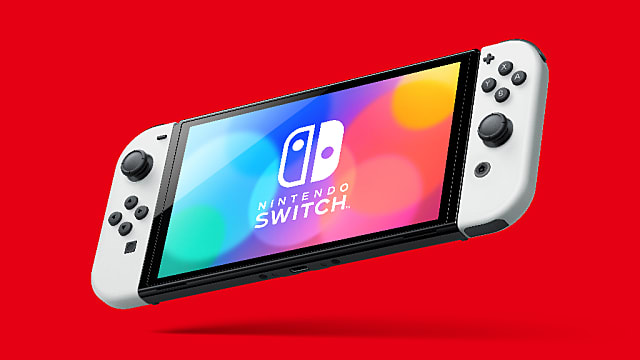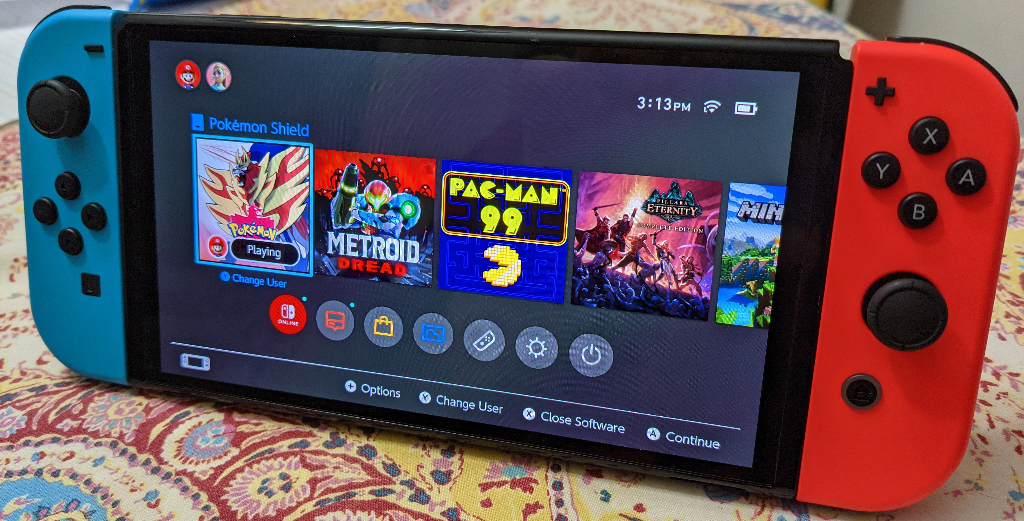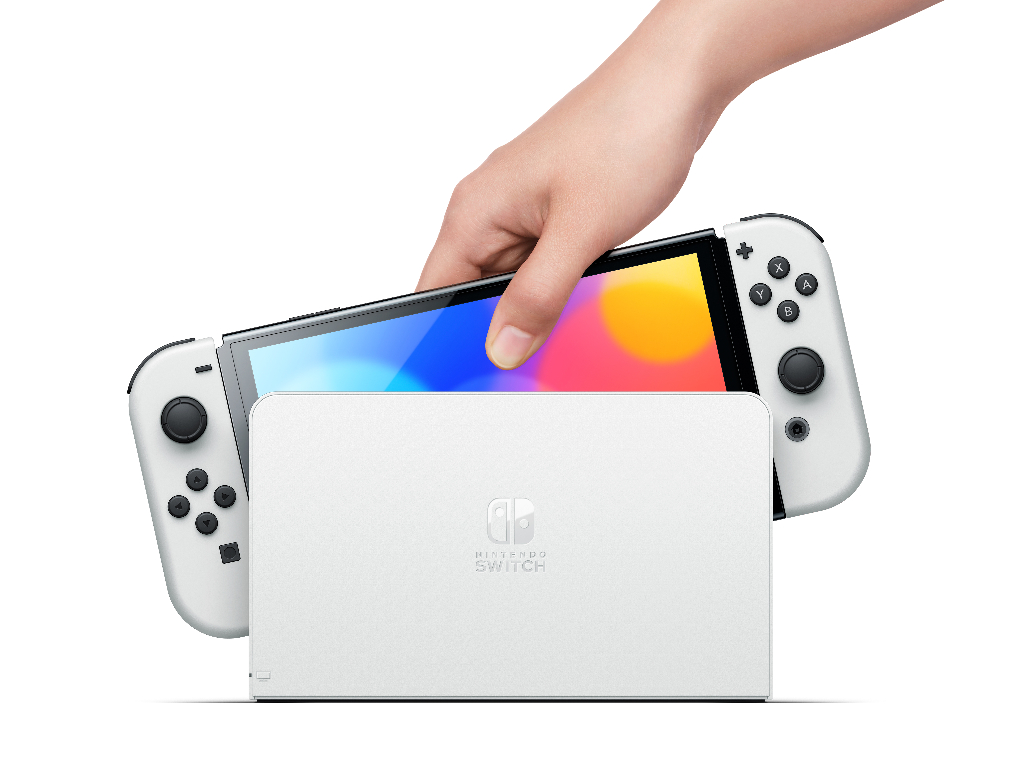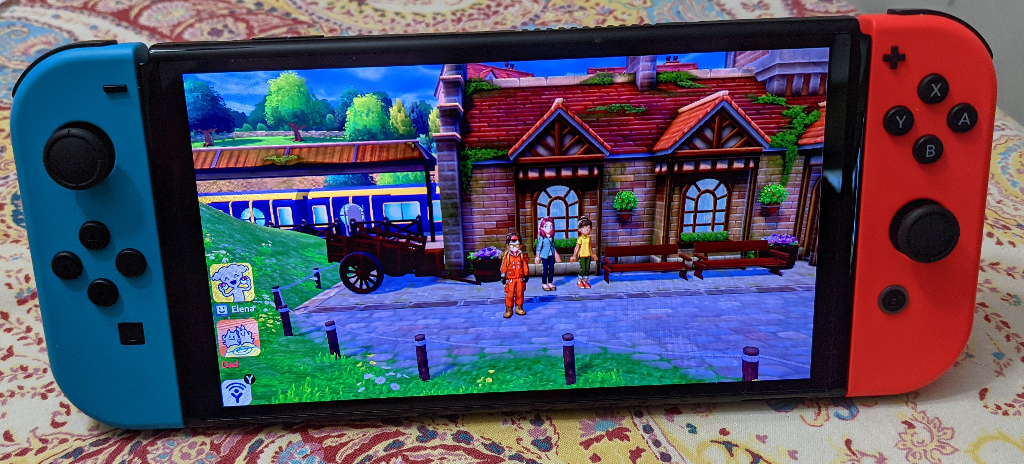The rumors about Nintendo releasing an updated Switch have been swirling since the system first arrived back in 2017. The Switch Lite wasn’t a surprise, and we liked that version quite a bit, but the latest iteration is an odd addition to the Switch family.
The Switch OLED is just what the name suggests. It’s the stock, full-size Nintendo Switch model with an updated, higher-quality OLED screen. That, of course, is the main attraction, but there are some other small updates worth mentioning.
Nintendo Switch OLED Review: Something New Something Old
The dock has an actual, physical LAN port now, and the Switch doubles the internal storage capacity, coming with 64GB of internal storage instead of the original’s 32GB. The built-in adjustable stand on the main body is much wider and the onboard speakers are noticeably improved. So, without a doubt, if you’ve put off buying any Switch until now, the OLED is the best and most versatile version available.
The actual footprint of the OLED screen is nearly identical to the original Switch. It uses the same Joy-Cons and even fits into and works with the old dock. Of course, it comes with a new dock and the addition of the aforementioned LAN port, eliminating its reliance on wi-fi or a USB-to-LAN adaptor. There are also still two USB ports on the outside of the dock.
Playing docked, there’s really no difference between the original and OLED models. The OLED is still using the same Nvidia Tegra X1 processor as the previous models. Any expectations of a dreamy 4K-able “Pro” version aren’t realized here, even with certain upgrades baked in, but that’s unlikely to be much of an issue for the majority of happy Switch owners.
The real perks of this new, pricier unit are only really apparent when using it undocked. The new body of the new Switch is noticeably more stylish. While the original has a 6.2-inch screen with a noticeable border around it, the new 7-inch screen has a much thinner bevel seamlessly integrated into the rest of the sleek black body. The design seems to be more inspired by high-end cell phones than any past Nintendo designs.
That thinner bevel enables the screen to be larger without actually changing the overall footprint of the Switch. It’s impressive how good the design looks. Indeed, it might be too stylish for its own good. When you slide the bright red and blue (or white) plastic Joy-Cons, they look almost gaudy in comparison.
The new OLED screen still sports the same resolution of 1280×720 as the Switch and Switch Lite, which is honestly disappointing as many would at least have hoped the portable screen would hit 1080p. Aside from that complaint, the picture quality is undoubtedly improved. The OLED’s ability to create truly deep blacks and vibrant colors makes a difference. The screen is brighter, easier to see, and shows off details better.
If you’ve found the Switch Lite too small (especially older gamers) and both previous Switches just not bright enough, this new screen is a solid argument for upgrading to the OLED. It’s much easier on the eyes and makes the games look better than ever.
The Nintendo Switch OLED Review— The Bottom Line
Pros
- New OLED screen is bigger, brighter, and better in almost every way than earlier Switch models
- New dock as a LAN port
- 64GB built-in memory
- Super-stylish housing for the new screen, yet still the same size as the original
Cons
- The OLED screen is still stuck at 720p
- No other actual meaningful upgrades in the Switch’s aging hardware
- Joy-Cons look even more toyish next to this new body
- Costs more
The Switch OLED is absolutely the best version of the Switch, but definitely not the upgrade many were hoping for. While the new screen really is a noticeable improvement and worthwhile for those that found the earlier models hard to see in portable mode, there’s otherwise little reason for anyone to rush out and upgrade their current Switches.
Still, for first-time buyers, this would be our top choice of the three models.










Published: Oct 18, 2021 03:24 pm